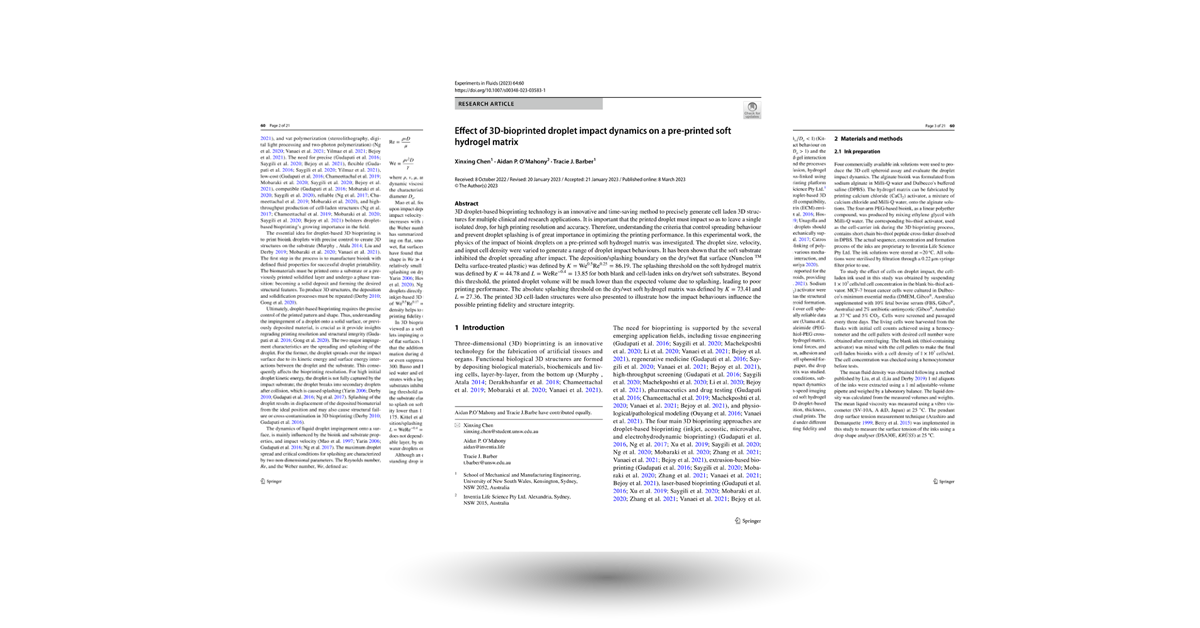
Effect of 3D-bioprinted droplet impact dynamics on a pre-printed soft hydrogel matrix
Abstract
3D droplet-based bioprinting technology is an innovative and time-saving method to precisely generate cell laden 3D structures for multiple clinical and research applications. It is important that the printed droplet must impact so as to leave a single isolated drop, for high printing resolution and accuracy. Therefore, understanding the criteria that control spreading behaviour and prevent droplet splashing is of great importance in optimizing the printing performance. In this experimental work, the physics of the impact of bioink droplets on a pre-printed soft hydrogel matrix was investigated. The droplet size, velocity, and input cell density were varied to generate a range of droplet impact behaviours. It has been shown that the soft substrate inhibited the droplet spreading after impact. The deposition/splashing boundary on the dry/wet flat surface (Nunclon TM Delta surface-treated plastic) was defined by K = We0.5Re0.25 = 86.19 . The splashing threshold on the soft hydrogel matrix was defined by K = 44.78 and L = WeRe−0.4 = 13.85 for both blank and cell-laden inks on dry/wet soft substrates. Beyond this threshold, the printed droplet volume will be much lower than the expected volume due to splashing, leading to poor printing performance. The absolute splashing threshold on the dry/wet soft hydrogel matrix was defined by K = 73.41 and L = 27.36 . The printed 3D cell-laden structures were also presented to illustrate how the impact behaviours influence the possible printing fidelity and structure integrity.